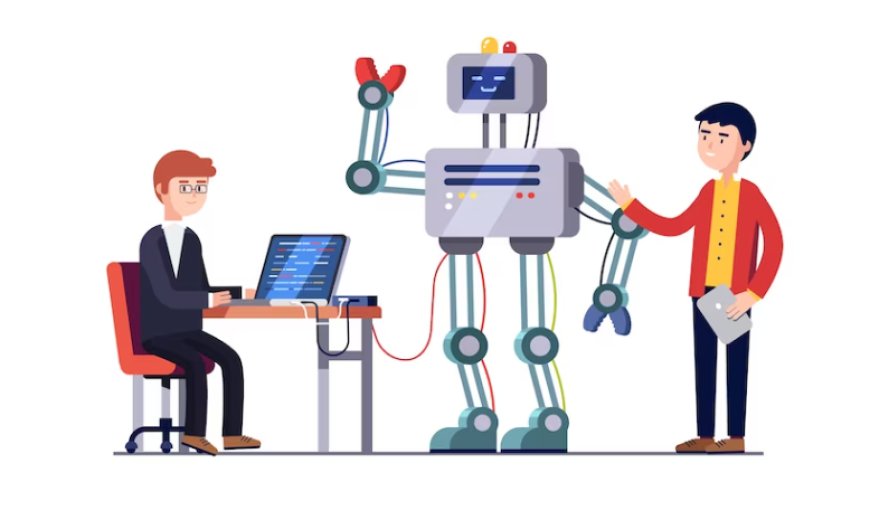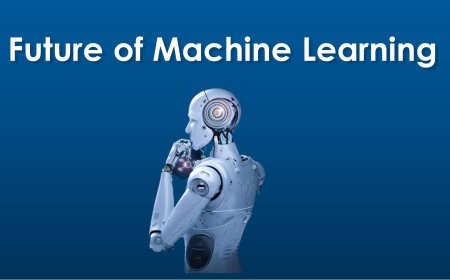How Machines Are Becoming Creative Collaborators
Explore the fascinating realm of machine creativity and collaboration. Learn how machines are evolving into creative partners, driving innovation across industries.

In technology, the role of machines is transcending traditional boundaries. No longer confined to mere tools that execute commands, machines are gradually becoming creative collaborators, actively contributing to the creative process in ways that were once thought to be exclusive to human ingenuity. This transformation is not a distant futuristic concept; it is happening now, and it holds profound implications for the future of innovation and collaboration.
Understanding the Shift in Paradigm
Traditionally, machines were viewed as tools with a primary focus on task automation and process optimization, aimed at improving overall efficiency. The transformative influence of artificial intelligence and machine learning has propelled machines into roles far surpassing their conventional utility. This evolution is rooted in their newfound capacity to sift through extensive datasets, identify intricate patterns, and derive insights that contribute meaningfully to the creative realm. It's this analytical prowess that has propelled machines beyond their traditional tool status, positioning them as collaborative partners in creative endeavors.
Their ability to process information at scale and discern complex relationships marks a significant departure from their historical role, ushering in an era where machines actively participate in the intricate and nuanced processes of creative ideation and innovation.
The Rise of Machine Learning in Creativity
Machine learning, a branch of artificial intelligence, has revolutionized the creative landscape by harnessing the power of algorithms. Unlike humans, these algorithms excel at processing extensive datasets, discerning intricate patterns that might elude human perception. This transformative capability finds pronounced expression in creative domains like art, music, and design, where machines play an increasingly active role in crafting original and captivating works.
In this machine learning algorithms analyze vast art databases, identifying trends and styles to inspire new creations. In music, these algorithms can decipher musical patterns and genres, contributing to the composition of innovative pieces. Design, too, witnesses the impact of machine learning as algorithms sift through diverse design elements, suggesting novel combinations and layouts.
This shift signifies a departure from viewing machines as mere tools and positions them as genuine collaborators in the creative process. By leveraging their analytical prowess, machines expand the horizons of creativity, offering fresh perspectives and novel insights that complement and enhance human ingenuity. The amalgamation of human creativity and machine learning marks a collaborative frontier, where the synergy of both entities births a new era of artistic and design innovation.
Enhancing Human Creativity Through Collaboration
The partnership between humans and AI algorithms is reshaping the creative process. Rather than supplanting human creativity, machines act as supportive collaborators. AI algorithms, drawing insights from extensive analyses of successful design patterns, offer valuable suggestions to graphic designers. This collaborative dynamic enhances the creative workflow by providing inspiration and expediting the ideation phase.
Consider a graphic designer working on a new project. Instead of starting with a blank canvas, they have the assistance of AI algorithms that sift through a vast database of design trends and successful visual elements. This not only sparks the designer's imagination but also accelerates the early stages of brainstorming. The synergy between human intuition and machine-driven data analysis results in a more efficient and enriched creative process. Designers can leverage the strengths of AI to refine their ideas, ultimately producing visually compelling and innovative outcomes that seamlessly blend human ingenuity with the analytical capabilities of machines. This collaboration exemplifies a harmonious integration, where technology becomes a valuable tool in the hands of creative professionals rather than a replacement for their unique insights and skills.
From Assistance to Co-Creation
In the evolution of technology, machines have transitioned from passive assistants to becoming pivotal co-creators in the creative landscape. This shift is particularly pronounced in creative industries where machines autonomously generate content, propose design elements, and even compose music. This collaboration between human ingenuity and machine capabilities challenges long-standing beliefs about the exclusive domain of creativity as a human endeavor.
Machines are contributing to content creation by analyzing vast datasets, recognizing patterns, and suggesting novel ideas. In graphic design, for instance, algorithms offer inspiration based on successful past designs, accelerating the creative process. Similarly, in music composition, machines can autonomously generate melodies and harmonies, expanding the possibilities of musical expression.
This partnership does not replace human creativity but enhances it by providing new perspectives and expediting the ideation phase. The synergy between human intuition and machine analysis is breaking down creative barriers, leading to innovative outcomes that were once deemed the sole purview of human minds. As this collaboration continues to evolve, it prompts us to reconsider the nature of creativity and acknowledge the valuable role machines play in expanding the horizons of what is achievable in creative endeavors.
A Collaboration Between Humans and Machines
Collaboration Between Humans and Machines refers to the evolving partnership between humans and advanced technologies, particularly in artificial intelligence. Rather than replacing human roles, machines are increasingly working alongside humans, contributing unique capabilities to enhance efficiency and creativity. This collaboration leverages the strengths of both parties: the nuanced creativity of humans and the data-processing power of machines. From aiding in creative processes like design and music composition to assisting in complex problem-solving, this collaboration is broadening the horizons of innovation.
As this relationship deepens, it necessitates a thoughtful approach to ethical considerations, educational adaptations, and harmonious integration of machine capabilities into various industries for mutual benefit and progress.
Applications Across Industries
The influence of machines as creative collaborators is far-reaching, extending its impact beyond specific sectors. Industries across the spectrum are witnessing the transformative effects of this collaboration, as the amalgamation of human creativity and machine capabilities opens new avenues for innovation and efficiency.
Healthcare
-
In healthcare, machines are contributing to the creative process of drug discovery. Through the analysis of extensive datasets, machines can identify potential compounds with therapeutic properties, expediting the research and development phase.
-
Diagnostic tools powered by artificial intelligence aid medical professionals in interpreting complex medical images, enhancing accuracy and speeding up the diagnosis process.
Finance
-
In the financial sector, machines are playing a pivotal role in data analysis for risk assessment. They can swiftly process vast amounts of financial data to identify patterns and trends, assisting financial analysts in making more informed decisions.
-
Automated trading algorithms utilize machine learning to analyze market conditions and execute trades at optimal times, optimizing investment strategies.
Entertainment
-
In the entertainment industry, algorithms are being employed to analyze audience preferences and behavior. This data-driven approach assists in content creation, suggesting themes, and genres, and even predicting potential success based on historical data.
-
Creative software powered by machine learning is being used to enhance special effects, streamline animation processes, and even generate music for films and video games.
Education
-
In education, machine collaboration is revolutionizing personalized learning. Adaptive learning platforms use algorithms to understand individual student progress and tailor educational content to specific needs, fostering a more effective and personalized learning experience.
-
Automated grading systems, leveraging machine learning, help educators assess assignments and provide timely feedback, allowing for a more efficient use of time and resources.
Manufacturing
-
In manufacturing, machines are enhancing the design process. Generative design algorithms can explore numerous design possibilities based on specified criteria, optimizing product designs for functionality, cost, and efficiency.
-
Predictive maintenance powered by machine learning enables manufacturers to anticipate equipment failures, reducing downtime and minimizing disruptions in production.
Retail
-
Retailers are utilizing machine collaboration to enhance the customer experience. Recommendation systems, driven by machine learning, analyze customer preferences and behaviors to suggest personalized products and improve overall customer satisfaction.
-
Inventory management systems leverage predictive analytics to optimize stock levels, preventing both overstock and stockouts, leading to improved operational efficiency.
Challenges and Ethical Considerations
The integration of machines as creative collaborators introduces a spectrum of opportunities but also ushers in ethical dilemmas that require thoughtful examination. One significant concern revolves around intellectual property, questioning who rightfully owns and claims authorship of creations generated collaboratively. Establishing clear guidelines and legal frameworks becomes imperative to navigate this complex landscape.
The accountability for creative outputs becomes a focal point. While machines contribute to the creative process, ensuring that the responsibility for the final result rests appropriately with human creators is a challenge. Striking a balance that acknowledges both machine assistance and human ingenuity is essential to maintain the integrity of the creative output.
The potential displacement of certain job roles due to increased automation raises societal and economic concerns. Careful consideration is needed to mitigate adverse impacts and facilitate a transition that respects the value of human skills in the collaborative landscape. Achieving a harmonious collaboration necessitates a conscientious approach to address these ethical challenges, emphasizing the importance of preserving human agency in creative endeavors while leveraging the capabilities of machines responsibly.
The trajectory of machines from passive tools to active creative collaborators marks a paradigm shift in how we perceive and engage with technology. The collaborative synergy between humans and machines is shaping a future where innovation is not bound by the limitations of either party. As we navigate this evolving landscape, it is essential to foster responsible and ethical collaboration, ensuring that the partnership between humans and machines contributes positively to the advancement of creativity and innovation. The era of machines as creative collaborators is here, and its impact will continue to shape the way we approach and redefine creativity in the years to come.











































